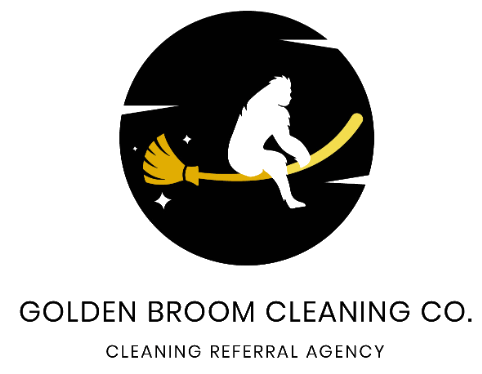Let’s be real—cleaning your house can sometimes feel like tackling Mount Everest. Whether you’re a busy professional, a bustling parent, or someone simply in need of more “me time,” hiring house cleaning services could be a game-changer. But how much should you really expect to pay for these services?
In this post, I’ll guide you through the average costs of house cleaning services in various areas, helping you get a feel for what a fair price looks like without the guesswork. From one-off deep cleans to regular weekly tidies, we’ll explore what affects pricing and how you can get the best bang for your buck.
Understanding these costs can help you make informed decisions and maybe even negotiate a better deal. So, if you’re ready to say goodbye to dust and smudges without breaking the bank, let’s dive into the world of house cleaning prices!
Factors Affecting House Cleaning Service Costs
So, what’s the deal with the pricing behind house cleaning? Several factors play a role in how much you’ll end up paying.
First up is the size of your home. Generally, the larger the space, the more you’ll pay. Cleaning a cozy apartment is less work and hence costs less than scrubbing down a sprawling mansion.
Next is the type of cleaning service you need. Are you after a regular tidy-up or a thorough deep clean? Deep cleaning involves more time and effort, which means a higher cost. Special tasks like carpet cleaning or window washing may add to the bill.
Frequency of Cleaning
Frequency also matters. Opting for a weekly or bi-weekly service can often bring discounts compared to a one-time clean, as regular clients are sometimes rewarded with lower rates.
Additional factors include your location—with urban areas typically costing more due to higher living expenses—and whether you provide your own cleaning supplies.
Don’t forget the condition of your home. If it’s been ages since the last scrub-down, cleaning services might charge extra for the heavier workload.
Finally, some services will offer add-ons like eco-friendly products or extended hours, each contributing to the overall cost. So, keep these in mind when budgeting for your pristine pad!
Estimating the Size of Your Home for Pricing
When it comes to pricing, understanding the size of your home is a big deal. Here’s a simple way to break it down.
First, consider the total square footage. This includes not just the living areas but also things like basements and attics, if they need cleaning. Keep in mind, more square feet might mean more dollars spent.
Then, think about the number of rooms. Some cleaning services price based on each room, especially bathrooms and kitchens, given that they usually require more detailed cleaning.
Don’t forget to include any special areas that might require extra attention—like a sunroom full of glass or a pet room that may need more frequent cleaning.
Finally, be upfront with your cleaning service about any complexities. Odd nooks or tons of clutter can affect both the time spent cleaning and the overall price. Knowing this can help you avoid surprises on your bill!
Comparing Hourly Rates Vs. Flat Rates
Choosing between hourly rates and flat rates can feel like a balancing act. Both have their advantages, but considering your specific needs can help tip the scales.
Hourly rates offer flexibility. If you’re just looking for a quick touch-up or have a small space, paying by the hour might save you some cash. But beware—cleaning can take longer than anticipated, which might inflate the price.
On the other hand, flat rates provide consistency. You know exactly what you’re paying, which can be comforting if you’re concerned about sticking to a budget. They’re particularly handy for larger spaces where cleaning tasks are well-defined.
Ultimately, the choice boils down to your preference and situation. If predictability helps you sleep at night, a flat rate might be ideal. But if you enjoy the freedom to dictate exactly how much cleaning gets done, hourly rates might be your best bet.
Understanding Additional Service Charges
Ah, the dreaded additional service charges! They can sneak up on you like that last slice of cake you swore you’d save for later. But don’t worry, understanding them is simpler than you might think.
Additional service charges usually pop up when you request something beyond the basic cleaning package. Think of things like deep cleaning, oven scrubbing, or carpet shampooing. They’re like bonus features you can choose to add.
Before you dive in, always ask for a clear breakdown of what’s included in your cleaning package. This way, you can spot any extras you’re asked to pay for and decide if they’re worth it.
It’s all about transparency. A good cleaning service should be upfront about costs, giving you the chance to pick and choose what suits your needs and budget best. In the end, knowing about these charges avoids any surprises and keeps your wallet happy.

Researching Average Costs in Your Area
Knowing what others are paying for cleaning services in your area is like having insider info on where the best food truck parks every Tuesday. It just makes everything easier!
First, start with a quick search online. Websites and apps can show reviews, services, and costs in your neighborhood, giving you a good baseline to work with. It’s like peeking at the menu before you arrive at the restaurant.
Compare and Contrast
Don’t just stop at one source—explore a few to get a well-rounded idea. Chat with friends or family who may already be using a cleaning service. These personal recommendations can be golden in guiding you towards reliable and cost-effective options.
Remember, prices can fluctuate depending on the size of your home, specific needs, and local competition. Knowing the average costs helps you stay ahead in negotiating the best deal and ensuring you don’t overspend.
Choosing the Right Cleaning Service for Your Budget
Once you’ve gathered all those juicy details on average costs, it’s time to match them up with your own budget. This part is all about aligning expectations with reality.
First, jot down what services you need most. Are you looking for a heavy-duty scrub or just a little help with tidying up? Knowing exactly what you require helps in filtering through choices without splurging.
Next, prioritize. Maybe you’re okay with doing some tasks yourself, like vacuuming or window cleaning. This way, you can pick a service that does the essentials and keeps you within your budget.
Finally, ask questions! Most companies offer different packages or one-time deals that might fit better with your financial plan. Don’t be shy—find out if there’s room for negotiation or any discounts available. This step ensures you get value for your money and keeps both your home and wallet happy.
The Bottom Line: Getting the Best Value for Your Money
When it comes to hiring a cleaning service, it truly pays to do your homework. Balancing between cost and quality is key, and with a little effort, you can find a service that ticks all your boxes without breaking the bank.
Begin by understanding what you really need, and then match those needs with the right service. This way, you’re not paying for extras you don’t want. Remember, the goal is to simplify your life, not complicate it further.
As you navigate the sea of options, be sure to consider what each company offers in terms of flexibility, reliability, and reputation. Look for reviews, ask for recommendations, and don’t hesitate to reach out to services for detailed quotes and potential discounts.
Additionally, don’t underestimate the power of negotiation. Some companies are willing to tweak packages or offer specials to win your business. It never hurts to ask!
In summary, getting the best value means being mindful of your budget while still getting a cleaning service that leaves your home sparkling. With careful planning and a keen eye for deals, you can enjoy a clean space and peace of mind, knowing you’ve made a savvy financial decision.
Ultimately, your living environment plays a big part in your well-being. By choosing a cleaning service wisely, you’re investing in a happier, more organized life. And who doesn’t want that?
